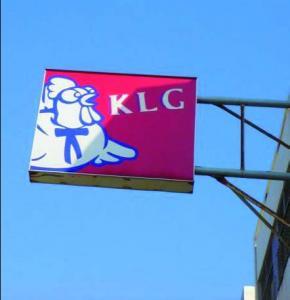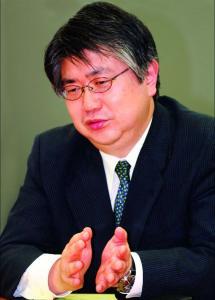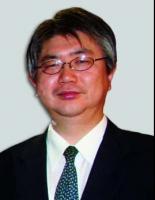Expert Interview: Yukio Nagasawa
J@pan Inc talks to a former intellectual property judge about IP in China, the US and Japan
By Louise Calvert
Yukio Nagasawa has a phenomenal resume. Among his glittering array of judicial appointments, professorships and qualifications from top global institutions, two features stand out. Firstly, he has a persistent interest in foreign legal systems: having worked and studied across Asia, Europe and the US, he has a wholly global legal perspective. Secondly, with a total of 20 years experience of work as a judge, including five years at the Supreme Court and four years at the Tokyo District Court, he has a unique inside view of the system.
 China's disrespect of IP rights has earned it international disapproval.
China's disrespect of IP rights has earned it international disapproval.
We were privileged to have the opportunity to interview him about intellectual property (IP) in China, the US and Japan.
Sino-Japanese relations and IP
China is often portrayed as irresponsible when it comes to IP, and it’s easy to see why. With the existence of bogus-brand fast-food chains (see picture) to a whole theme park full of copied characters, including versions of Hello Kitty and Donald Duck, the world’s frustration is understandable. However, since China’s entry into the World Trade Organization (WTO) in 2001 there has been some improvement and most recently, Yamaha, the Japanese motorcycle manufacturing giant, won a case against four Chinese companies for using their brand name without permission. Although a number of Japanese companies, including Sony and Nippon Paint, have been embroiled in IP disputes with Chinese companies, there has been little progress in the courts with compensation awards being notably low. Breaking this trend, in the case of Yamaha, the courts were hard on the offenders and awarded roughly US$1.09 million in compensation—the largest award ever in such a case.
|
|
Career Highlights 1981 Passed the Bar Examination 1982 Graduated Tokyo University, Law Faculty 1989-1992 Judge at the Tokyo District Court Intellectual Property Division 1992-1993 Studied abroad as a Long Term Overseas Research Judge in the US, UK, Germany, France. 1995-2000 Legal Assistant to Justices in charge of Intellectual Property appeals, 2000-2003 judge of the Tokyo High Court, Intellectual Proerty Division 2003- Entered private practice |
Selected publications
|
We asked Mr Nagasawa, who has spent time both studying and working in China, what the significance of this case is for Japan’s commercial relationship with Middle Kingdom. He explained that, “although China and Japan have many cultural similarities, China is a communist country and it has not really got used to the practices expected of a country in the free market economy.” On the other hand, China is changing and gradually, what Nagasawa terms the “rule of law”, is becoming the norm: “I have spoken with many Chinese judges and there seems to be a genuine desire to be fair.” Comparing his own country with China, he believes that the Chinese IP system is probably at a similar stage now as Japan was 20 years ago.
IP disputes between Japan and China reveal much about the dynamics of Sino-Japanese relations. At the political level there are flashpoints such as the island dispute of the Senkaku/Diaoyu islands, persisting historical controversies over Japanese textbooks and visits to Yasukuni shrine, not to mention insecurities over arms build-up and the situation across the Taiwan Straits. On the other hand, trade relations between the two have grown thicker year on year and the business communities in both countries often berate their respective governments for flaring up problems.
Nagasawa has observed this tension in the IP field firsthand: “When I was a Visiting Professor at Peking University, I was surprised to see monuments to Western scholars and economists. However, next to them was a monument to the Chinese who fought against the Japanese—this I found very shocking, and yet, the university hosted me as an academic and I was well received by many Chinese lawyers and judges.”
He believes that persistent anti- Japanese sentiment makes China less predisposed in its judgements involving Japanese companies than towards US companies, but the Yamaha case signals a change in the system. Sensitive to the political climate, many Japanese companies are actually reluctant to take cases to court and prefer to use arbitration, or simply not damage relationships any further when they know they have little hope of winning in the Chinese court system. Nagasawa thinks that WTO entry and pressure from the US has helped China be more responsible in terms of IP but that with regard to Japan, more bridges need to be built.
![]() The 'Kilby Patent' concerning semiconductor patents was a source of friction between Japan and the US
The 'Kilby Patent' concerning semiconductor patents was a source of friction between Japan and the US
Outward conformity: IP in the US and Japan
In 2000, Jack St Claire Kilby was awarded the Nobel Prize for physics in recognition of his innovation of Semiconductor Integrated Circuits (SIC): high speed transistors without which the ‘digital age’ would not exist. Texas Instruments (TI) owned the patent for Kilby’s SICs and in the 1990s the ‘275 Kilby Patent’ became famous in Japan when TI took Fujitsu to court alleging patent infringement. Judgements by the Japanese courts were made in favour of Fujitsu in 1994, 1997 and 2000. In 2000 the Supreme Court ruled that the Kilby patent was invalid in Japan. This was a precedent in that it was the court alone that made the decision, without the Japan Patent Office, which as a consequence speeded up the decision making processes on patents in the future. On the other hand, it highlighted the lack of harmony between Japan and the US over IP rights and a worrying lack of communication.
“in Japan there is no jury system and this makes for a different cultural and procedural environment.”
Nagasawa believes that there are still many misconceptions on either side: “It isn’t about whether the Japanese or US system is better, it is about understanding where the differences lie.” The largest difference, according to him, is the fact that in the US there is a jury system, but “in Japan there is no jury system and this makes for a different cultural and procedural environment.” Beyond this obvious dissimilarity, he says that many companies are misled into thinking that the laws are the same because on paper, there is ostensibly a substantial amount of common ground, but in practice the reality is different.
 Yukio Nagasawa
Yukio Nagasawa
Photo by Vincent Descamps
For example, in the procedure leading up to a patent trial in the US, there is normally the practice of ‘discovery’— preparation of evidence and information. Each party has the right to issue the other side with an ‘Order to Produce Documents’ and find expert witnesses. Nagasawa explains that in Japan, there are no such orders and generally expert witnesses are not used. In Japan the litigation process is actually much shorter without the ‘discovery’ period, lasting on average between six to eight months. This means it is also less costly.
Nagasawa laments that many US clients going through the Japanese system approach him asking to complete the Japanese ‘discovery,’ which they believe to be useful. “If they had spoken to me at an earlier stage, I could have helped them avoid such unnecessary preparations, and instead advised them to concentrate on the things that are really important in Japan, such as getting a well worded engineer’s declaration.” Also the description of the contents and what imported materials are included is vital. When he worked at a company in the US, he had to transpose the legal strategy for a Japanese context, a task eliminating the possibility of sleep for about a week!
The other side of the bench
Having spent so many years as a judge, Nagasawa has recently gone to the other side of the bench and set up his own independent practice, which specializes in IP. He says that his knowledge and experience as a judge has helped him understand what is demanded of the patent attorney, and how to make it easy for the judge to make a decision in his client’s favor. It has also given him a fresh perspective on the trademark and patent application process in Japan.
For example, when deciding to place an injunction on a company, prohibiting their activities, he never really understood the consequences of this decision. He once placed an injunction on a major Japanese company, but only now can he understand the nervousness of the attorneys and reaction of their client. Having been on the other side of the bench, is now clear to him how to push the right buttons to avoid the worst for the client. He has also started to openly question the utility of injunctions generally. Nagasawa believes that a settlement between the two parties is probably a smoother conclusion and there is a way for the judge to facilitate this. He is particularly partial to a method of dispute settlement termed wakai—a kind of ‘round table’ discussion where the judge is able to recommend a settlement option to either party in confidence. Mr Nagasawa has written extensively on the merits of wakai for the International Association for the Protection of Intellectual Property, Japan (AIPPI Journal, January 2007).
It seems as though Nagasawa is much happier in his new role and enjoys dealing with his clients and making use of all his connections. He says that it is vital for him to keep in good communication with the judges so that he can avoid any unforeseen complications. While it may make him more nervous being the one waiting for the verdict, rather than making it, he finds his work as an attorney a challenge and is consistently intrigued by the way foreign companies and the Japanese system are gradually learning about each other.
Contact details
Yukio Nagasawa
New Bridge Law Office
Nagasawa Patent Office
1st Kowa Building 5F
1-15-5 Shimbashi,
Minato-ku Tokyo 105-0004
Tel: +81-3-3503-3531
Fax:+81-3-3503-3532
Email: y.nagasawa@newbridge-law.jp
Web: www.yukio-nagasawa.com






